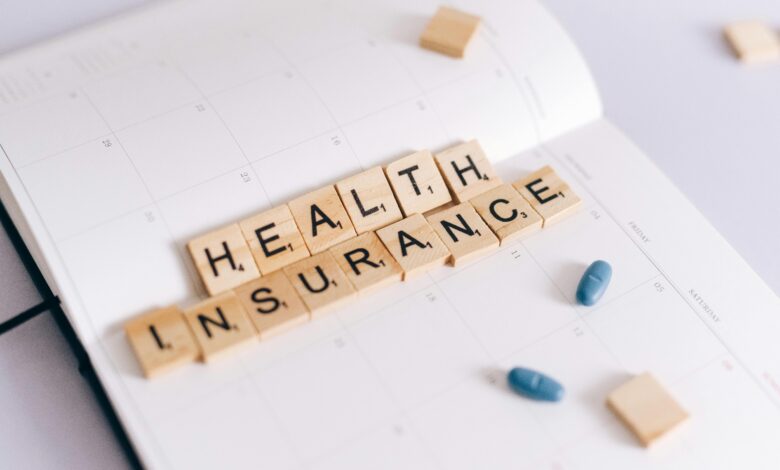What Does Emergency Medical Insurance Cover in Travel Insurance?

Traveling is an exciting adventure, but unforeseen medical emergencies can happen anywhere—even in the most well-planned trips. That’s where emergency medical insurance , a key component of travel insurance, comes into play. This coverage ensures you’re protected against unexpected medical expenses while traveling abroad or even within your home country. But what exactly does emergency medical insurance cover? In this article, we’ll break it down in detail, explain its importance, and provide tips for choosing the right plan.
Why Is Emergency Medical Insurance Important?
Before diving into the specifics, let’s address why emergency medical insurance is essential:
- High Healthcare Costs Abroad : Medical treatment can be prohibitively expensive in many countries, especially in places like the United States.
- Lack of Coverage by Domestic Health Plans : Most domestic health insurance plans don’t extend coverage internationally, leaving travelers vulnerable to hefty bills.
- Unpredictable Emergencies : Accidents, illnesses, or sudden health crises can occur without warning, regardless of how healthy you are.
- Peace of Mind : Knowing you’re covered allows you to focus on enjoying your trip rather than worrying about potential medical costs.
Emergency medical insurance bridges these gaps, ensuring you receive necessary care without facing financial hardship.
What Does Emergency Medical Insurance Typically Cover?
Emergency medical insurance is designed to cover unexpected medical expenses incurred during your travels. Here’s a detailed breakdown of what it typically includes:
1. Emergency Medical Treatment
- Doctor Visits : Covers consultations with local healthcare providers for illnesses or injuries.
- Hospital Stays : Includes costs for hospital admissions, surgeries, and overnight stays.
- Ambulance Services : Pays for emergency transportation to medical facilities.
- Prescription Medications : Covers medications prescribed during your trip due to a covered medical condition.
2. Accident-Related Injuries
- If you’re injured in an accident (e.g., a car crash, slip, or fall), emergency medical insurance will cover the cost of treatment, including X-rays, casts, stitches, or surgery.
3. Sudden Illnesses
- Whether it’s food poisoning, appendicitis, or a respiratory infection, this coverage ensures you receive timely treatment for unexpected illnesses.
4. Medical Evacuation
- Emergency Evacuation : If adequate medical care isn’t available locally, the policy may cover the cost of transporting you to the nearest appropriate facility.
- Repatriation : In extreme cases, if you need to return home for treatment, the insurer may arrange and pay for your repatriation.
5. Dental Emergencies
- Many policies include coverage for urgent dental treatments, such as repairing a broken tooth caused by an accident.
6. Pre-Existing Conditions (Under Certain Conditions)
- Some policies offer limited coverage for pre-existing conditions, provided they’ve been stable for a specified period before your trip. Always check the fine print.
7. Follow-Up Care
- If you require ongoing treatment after returning home, some policies may reimburse follow-up visits or physical therapy sessions.
8. COVID-19 and Other Pandemics
- Many modern travel insurance plans now include coverage for COVID-19-related medical emergencies, including testing, quarantine accommodations, and treatment.
What Isn’t Covered by Emergency Medical Insurance?
While emergency medical insurance provides valuable protection, there are limitations and exclusions to be aware of:
- Non-Emergency Treatments : Routine check-ups, elective procedures, or cosmetic surgeries aren’t covered.
- Pre-Existing Conditions (Unless Waived) : Unless explicitly stated, pre-existing conditions may not be covered.
- Self-Inflicted Injuries : Injuries resulting from reckless behavior, illegal activities, or self-harm are excluded.
- Adventure Sports : High-risk activities like skydiving, scuba diving, or rock climbing often require additional coverage.
- Alcohol or Drug-Related Incidents : Medical issues arising from intoxication or drug use are typically not covered.
- Travel Against Government Warnings : If you travel to a destination with an active travel advisory, claims related to that location may be denied.
- Pregnancy Complications : While some policies cover complications of pregnancy, routine maternity care is usually excluded.
Always read the policy wording carefully to understand what’s included and excluded.
How Much Coverage Do You Need?
The amount of emergency medical coverage you need depends on several factors:
- Destination : Countries with high healthcare costs (e.g., the U.S.) require higher coverage limits. For example, $100,000 CAD might suffice for Europe, but $500,000 CAD or more is recommended for the U.S.
- Trip Duration : Longer trips increase the likelihood of needing medical care, so opt for sufficient coverage.
- Health Risks : Consider your personal health and any activities you plan to engage in. Higher-risk trips may necessitate additional coverage.
- Age : Older travelers may face higher premiums and should ensure their policy covers age-related conditions.
A general rule of thumb is to choose a policy with at least $100,000 CAD in emergency medical coverage, though many experts recommend $250,000 CAD or more for international travel.
Tips for Choosing the Right Emergency Medical Insurance
To ensure you get the best coverage for your needs, keep these tips in mind:
- Compare Policies : Don’t settle for the first option you find. Compare multiple providers to evaluate coverage, exclusions, and pricing.
- Check Coverage Limits : Ensure the policy offers adequate limits for medical expenses, evacuation, and repatriation.
- Look for 24/7 Assistance : Choose a provider with round-the-clock customer support to help you navigate emergencies.
- Review Exclusions Carefully : Understand what’s not covered and consider purchasing add-ons if needed (e.g., adventure sports coverage).
- Verify Pre-Existing Condition Terms : If you have a pre-existing condition, confirm whether it’s covered and under what conditions.
- Consider Add-Ons : Supplement your policy with extras like baggage insurance, trip cancellation, or rental car coverage for comprehensive protection.
- Read Reviews : Research the insurer’s reputation for handling claims efficiently and fairly.
Real-Life Scenarios: How Emergency Medical Insurance Helps
Here are a few examples of how emergency medical insurance can make a difference:
Scenario 1: Broken Leg While Skiing
You’re skiing in the Canadian Rockies when you take a tumble and break your leg. Emergency medical insurance covers the cost of an ambulance ride to the hospital, X-rays, casting, and pain medication.
Scenario 2: Appendicitis Overseas
While vacationing in Thailand, you develop severe abdominal pain and are diagnosed with appendicitis. Your policy pays for the emergency surgery and hospital stay, saving you thousands of dollars.
Scenario 3: Medical Evacuation in a Remote Area
During a safari in Africa, you suffer a heart attack. Since the nearest hospital isn’t equipped to treat you, your insurer arranges and pays for a medical evacuation to a major city.


